|
View as a webpage
|

Lacks Creek Management Area, Arcata Field Office
|
|
ISSUE 899- April 23, 2020
|
|
|
- Happy Earth Day!
- Energy Independence
- Headlines & Highlights
- Wildland Fire & Fuels Management
- BLM Armchair Adventures
- BLM & DOI Highlights
- Wildlife Question of the Week
- Upcoming Events
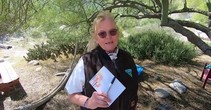
Your desert backyard with Tracker
This week, we celebrate #Earthday 🌎and #NationalParkWeek. Today, we explore Tracker's desert yard near the Santa Rosa & San Jacinto National Monument. Tracker takes you on a tour of her backyard and introduces the native (and non-native) plants and animals common to many Southwest desert yards. (BLM CA Facebook)
|
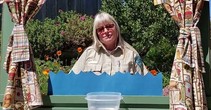
Ranger Tammy reads, "Who Polluted the River?"
Today, we have a special interactive children’s story for all the little ones at home. BLM Ranger Tammy reads, "Who Polluted the River?" Explore the environment around us and learn how small changes in our daily lives can affect big changes in our waterways. (BLM CA Facebook)
|
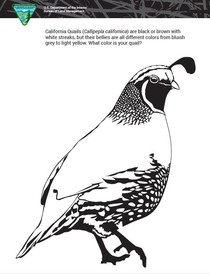
California quail needs a makeover
If you're looking for a fun activity to do with the little ones this weekend, check out the California Educational Resources page and download a coloring page of the California Quail!
|
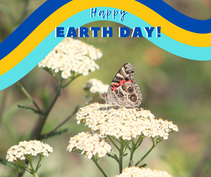
Happy Earth Day!
We hope you all had a great #EarthDay2020 and found some time to reflect on why the #Earth's natural environment is so beautiful and important! Again, thank you all for supporting us and we look forward to welcoming you back on the trails when the time is right! #commonyarrow #americanpaintedlady #butterflies #nativeplants. (CRP Facebook)
|
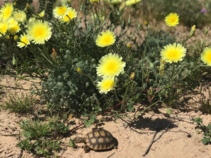
Baby tortoises in isolation enjoying a feast
Here is a photograph of one of our baby tortoises in isolation enjoying a feast of wild flowers. 🐢 (Desert Discovery Center Facebook)
|
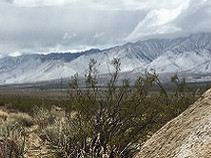
BLM approves Haiwee Geothermal Leasing Area
The Bureau of Land Management has approved the Haiwee Geothermal Leasing Area project in southern Owens Valley, Inyo County, authorizing three geothermal lease applications for exploration and development on approximately 4,460 acres of public land. (BLM news release)
|
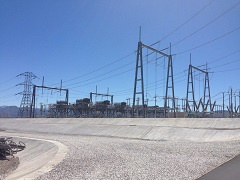
The BLM seeks public comment on Eldorado-Lugo-Mojave project
The Bureau of Land Management is seeking public comment on modifications and installation of telecommunications facilities within Southern California Edison’s (SCE) existing rights-of-way (ROW), which crosses public lands within California and Nevada. Comments on the environmental assessment are due by May 18, 2020. (BLM news release)
|
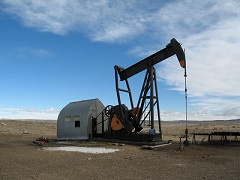
BLM hosts virtual conference to improve electronic system for tracking oil and gas activity on public lands
The Bureau of Land Management hosted a two-day virtual conference this week with oil and gas industry technical experts to identify needed improvements to the agency’s automated system which tracks activity on public lands. (BLM news release)
|

New Adoption Facility Under Construction at BLM Litchfield Corrals
Wild horse and burro adopters and purchasers in northern California will benefit from increased convenience and comfort in the coming months, when a new adoption center and office opens at the Bureau of Land Management Litchfield Wild Horse and Burro Corral near Susanville, Calif.(BLM CA blog)
|
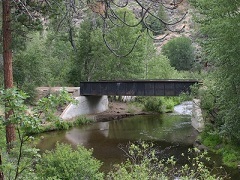
Hobo Camp day use area will open for trout season opening day
The Bureau of Land Management will open the Hobo Camp Day Use Area along the Susan River, near Susanville, will open on Saturday, April 25, the opening day of stream fishing season in northern California.
The main vehicle gate on Hobo Camp Road, off South Street, will be opened at 5 a.m. for fishing season opening day. For the remainder of the spring through fall seasons, the BLM will open the gate at 8 a.m. and close it a half-hour after sunset daily. Hobo Camp is also accessible to walkers and bike riders from the Susanville Railroad Depot Visitor Center and trailheads on Lassen Street and Miller Road in Susanville. (BLM news release)
|
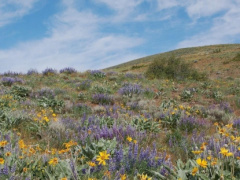
BLM invites public to participate in virtual meeting
The BLM invites the public to participate in a virtual meeting about the recently published Draft PEIS for Fuels Reduction and Rangeland Restoration in the Great Basin. (BLM news release)
|
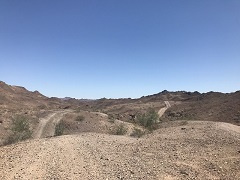
BLM seeks public comment on off-highway vehicle routes in the Vinagre Wash Special Management Area
The Bureau of Land Management El Centro Field Office invites the public to provide written comments on additional off-highway vehicle (OHV) routes in the Vinagre Wash Special Management Area, near Palo Verde, Imperial County. The public comment period will end on May 21. (BLM news release)
|
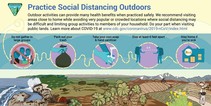
Practice social distancing outdoors
Outdoor activities can provide many health benefits when practiced safely. We recommend visiting areas close to home while avoiding very popular or crowded locations where social distancing may be difficult and limiting group activities to members of your household. Do your part when visiting public lands. (BLM CA Website)
|
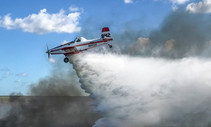
Planning for wildfire in a COVID-19 world
Over the last month, three Area Command Teams worked to develop regional guidance and best practices for wildfire response during the COVID-19 pandemic. Fire managers and incident management teams will use this guidance when they’re called on to respond to wildfires this year. Neal Herbert spoke with spokesperson Kerry Greene to learn more about this effort. (DOI Office of Wildland Fire blog)
|
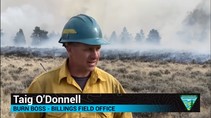
Kendall Coulee South prescribed burn
Safely and successfully conducting a prescribed fire requires a great deal of planning and coordination. Addressing the additional health concerns we currently face adds to that challenge. Bureau of Land Management - Montana/Dakotas has developed an approach that is allowing firefighters to continue this important work. #Covid19 #SlowTheSpread (BLM Facebook)
|
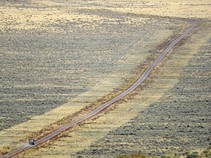
11,000 miles fuel breaks to be constructed
#EarthDay2020: Up to 11,000 miles of strategically placed fuel breaks will be constructed to control wildfires within a 223 million- acre area in portions of California, Idaho, Nevada, Oregon, Utah and Washington. #earthday #ReadyForWildfire (NIFC Facebook)
|
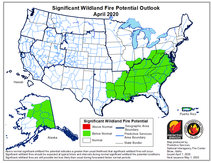
Wildland fire outlook
Check out the latest #WildlandFireOutlook! Available here. (NIFC Facebook)
|
|
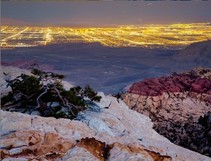
Red Rock Canyon National Conservation Area
Happy #EarthDay! A twisted ponderosa pine clings to the orange-red Aztec sandstone cliffs in the waning evening light on the top of an unnamed peak in Red Rock Canyon National Conservation Area. Just 10 miles to the east and 5,000 vertical feet below, the bright lights of Las Vegas are a stark contrast to this windswept perch. Most visitors to Red Rock Canyon view its towering namesake cliffs from the scenic loop road and hiking trails at the base of the peaks. (BLM Instagram)
|
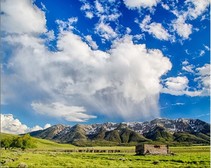
The Centennials
The Centennials are one of the few east-west trending mountain ranges in the Rockies and serve as an important corridor for migrating animals. Yellowstone, Glacier, the Sawtooths and the Tetons all owe aspects of their current ecosystems to this range as a migration path linking the greater Yellowstone area to other parts of the Northern Rockies. The Centennials contain some of southwest Montana’s wildest country. (BLM Instagram)
|
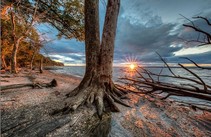
Douglas Point
Only 40 miles south of our nation’s capitol, Douglas Point includes one of the few remaining undeveloped tracts of land along the Potomac River. Although timber was harvested here long ago, the presence of large trees and layers of shrubs and understory plants show that the area is once again developing into an old-growth forest, providing a wide variety of nesting and feeding areas for wildlife. (BLM Instagram)
|
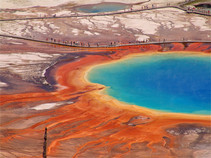
National Parks are National Treasures
From sea to shining sea, our national parks protect and preserve what’s best about our nation. With stunning natural beauty, amazing wildlife, inspiring history and lots of opportunities for fun and recreation, there’s no wonder why they’re often called “America’s best idea.” (DOI news release)
|

Interior Announces $28.4 Million in Payments to Western Oregon Counties
The issuance of more than $28 million to 18 counties in western Oregon as a part of the Secure Rural Schools and Community Self-Determination Act extension. (DOI news release)
|
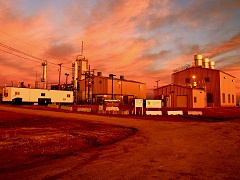
BLM announces disposal process for Federal Helium System
The Bureau of Land Management today announced the process and timeline by which remaining helium and helium assets will be disposed of in order to meet the requirements of the Helium Stewardship Act of 2013. (BLM news release)
|

This Week at Interior April 17, 2020
As the nation marks ten years since the Deepwater Horizon oil spill, the Trump Administration has made great strides in restoring coastal habitats while ensuring safe and responsible energy development along the Outer Continental Shelf; as National Park Week kicks off Saturday, April 18th, all of this year's activities will take place online because of the COVID-19 pandemic. (DOI video)
|
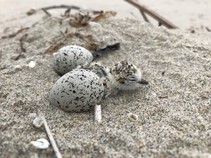
Multiple choice
The snowy plover (Charadrius nivosus) is a small shorebird distinguished from other plovers by its small size, pale brown upper parts, dark patches on either side of the upper breast, and dark gray to blackish legs. They nest on the sand on sparsely vegetated coastal beaches and lakeshores and also nest near man-made wastewater ponds and reservoirs. They often line their sand nests with seashells.
How soon do snowy plover hatchlings leave their nest?
a) Four weeks
b) Three months
c) Three hours
Keep scrolling to find the answer.
|
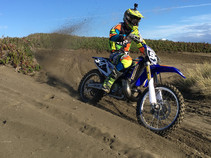
BLM seeks comments on 2020 off-highway vehicle recreation proposals
Deadline May 4, 2020
The Bureau of Land Management is seeking public comments on the California State Parks, Off-Highway Motor Vehicle Recreation Division, off-highway vehicle recreation proposals, which are available for review from March 3 to May 4 (BLM news release)
|
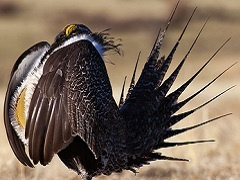
BLM extends comment period on greater sage-grouse analysis
Deadline May 21, 2020
The Bureau of Land Management has extended the public comment period on six draft supplemental environmental impact statements for the resource management plans that guide management of greater sage-grouse habitat on public lands in seven Western states. (BLM news release)
|

BLM seeks public comment on proposed e-bike regulations
Deadline June 9, 2020
The Bureau of Land Management today announced a 60-day public comment period on proposed electric bike, or e-bike, regulations, intended to make it easier for more Americans to recreate on and experience their public lands. (BLM news release)
|
|
Wildlife Question of the Week Answer
The answer is (c). Young Snowy Plovers leave their nest within three hours of hatching. They flatten themselves on the ground when a parent signals the approach of people or potential predators. They walk, run, and swim well and forage unassisted by parents, but require periodic brooding for many days after hatching.
The BLM Arcata Field Office manages 51 acres of breeding habitat for western snowy plovers that prefer to lay their eggs on wide-open expanses of beaches, where they can easily see and ward off predators. To improve nesting habitat, BLM crews work outside of breeding season using heavy equipment such as bulldozers and agricultural tractors with discs to remove invasive European beach grass and add oyster shells to the beach surface.
Source: BLM news release, All About Birds, National Geographic Kids
|
|
|
News.Bytes is a publication of the Bureau of Land Management in California.
Bureau of Land Management
California State Office
2800 Cottage Way, Suite W1623
Sacramento, CA 95825
(916) 978-4600
Send comments to the News.Bytes Team | Subscribe to News.Bytes | Unsubscribe
|
     
|
|
|